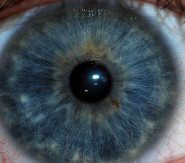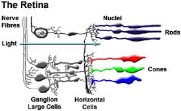Reference: TC 3-04.93 Aeromedical Training for Flight Personnel (2009) - heloip
Main menu:
- Home Page
- Simulator
- Introduction
- Manuals
-
Classes
- SOP
- Aeromedical
- Aerodynamics
- Instruments
- Combat Skills
- Night Vision Goggles
- Video
- Photo Album
- Instructor Contact
Reference: TC 3-04.93 Aeromedical Training for Flight Personnel (2009)

Crewmembers rely more on their vision than any other sense to orient themselves in flight. While vision is the most accurate and reliable sense, visual cues can be misleading and contribute to incidents within the flight environment. Aviation personnel must be aware of and know how to effectively compensate for physical deficiencies and self-
Understanding basic anatomy and physiology of the eye enables crewmembers to use their eyes more effectively during flight. Light enters the eye and passes through the cornea, then the pupil in the center of the iris, then the lens then to the retina. The retnia has many tiny photoreceptor cells known as rods and cones. When light stimulates the retina, it produces a chemical change and then transmits it to the optic nerve then to the brain.
If you can remember the items in red above, you can understand the BASIC concept of how we see things.
Cornea -

Iris and Pupil -

Lens -

Retina -

Rods and Cones -

The impulses from the Rods and Cones are then transmitted to the brain by the Optic nerve. The brain then interprets the impulses and there you have it.... We see!
Watch the short video on Youtube for a review. How the eye works!

A deeper knowledge on Rods and Cones will be required for Night and Night Vision Goggle flying techniques.